Directions (1-5): In the given questions, two quantities are given, one as ‘Quantity I’ and another as ‘Quantity II’. You have to determine relationship between two quantities and choose the appropriate option:
Q1. Ratio of age of Anurag and Bhumi is 6 : 7 and Dharmendra : Ekta is 9 : 5. Ratio of average age of Anurag, Bhumi, Dharmendra& Ekta to age of Chiru is 9 : 10
Quantity I- If ratio of age of Bhumi and Dharmendra is 7 : 9 and age of Chiru is 6 years less than age of Dharmendra, then age of Chiru.
Quantity II – If ratio of age of Bhumi and Dharmendra is 7 : 9 and age of Chiru is 6 years less than age of Dharmendra, Average age of Anurag& Dharmendra.
(a) Quantity I > Quantity II
(b) Quantity I < Quantity II
(c) Quantity I ≥ Quantity II
(d) Quantity I ≤ Quantity II
(e) Quantity I = Quantity II or no relation
Q2. Two vessels A & B contains (x + 16) ℓ and (x + 56) ℓ mixture of milk and water respectively. If 20% from mixture from vessel A &46⅔% mixture from Vessel B taken out remaining mixture in both vessels become equal.
Quantity I – If ratio of milk to water in vessel A & B is 5 : 3 & 7 : 5 respectively, then total quantity of milk in both vessel.
Quantity II – 140% of total quantity of mixture in vessel A.
(a) Quantity I > Quantity II
(b) Quantity I < Quantity II
(c) Quantity I ≥ Quantity II
(d) Quantity I ≤ Quantity II
(e) Quantity I = Quantity II or no relation
Q3. Radius of cone is 4 cm less than side of square of which area is 324 cm². Height of cone is 5 cm more than radius of circle, whose circumference is 44 cm.
Quantity I –Volume of cone.
Quantity II –2488 cm³
(a) Quantity I > Quantity II
(b) Quantity I < Quantity II
(c) Quantity I ≥ Quantity II
(d) Quantity I ≤ Quantity II
(e) Quantity I = Quantity II or no relation
Q4. Quantity I –x² – 21x + 108 = 0
Quantity II – x² – 30x + 216 = 0
(a) Quantity I > Quantity II
(b) Quantity I < Quantity II
(c) Quantity I ≥ Quantity II
(d) Quantity I ≤ Quantity II
(e) Quantity I = Quantity II or no relation
Q5. 240 meters & 210 meters long trains running in opposite direction cross each other in 6 sec. Ratio between speed of longer train and smaller train is 7 : 8 and faster train cross a platform in 9 sec.
Quantity I – Time taken (in sec) by slower train to cross a bridge, which is 60 meters longer than platform.
Quantity II –16 sec
(a) Quantity I > Quantity II
(b) Quantity I < Quantity II
(c) Quantity I ≥ Quantity II
(d) Quantity I ≤ Quantity II
(e) Quantity I = Quantity II or no relation
Directions (6-10): Each of the following question is followed by two statements I, and II. You have to study the question and the statements and decide which of the statement(s) is/are necessary to answer the question.
(a) Only Statement I alone.
(b) Only Statement II alone.
(c) Both Statements I and II together.
(d) Neither Statement I nor II is sufficient.
(e) Either Statement I or II alone.
Q6. What is the time taken by Saif to cover a distance of 100 km by car?
I. Saif covers a distance of 100 km in 5 hours using bike.
II. speed of bike and that of car is in ratio 5:7.
Q7. In how much time can Deepika do the work alone?
I. Kareena & Deepika can complete a piece of work in 10 days working together.
II. Madhuri and Kareena can complete the work in 6 days working together.
Q8. In how many ways can 4 boys and 5 girls be selected?
I. there are 20 persons (boys + girls) in the group out of which 12 are boys.
II. the ratio of boys to girls in the group is 3:2.
Q9. What is the volume of conical tent?
I. the height and radius of tent is in ratio 4:3, where sum of radius and height is 14m.
II. the slant height is 13 cm while radius is 5 cm.
Q10. Find the value of a and b?
I. a:b = 3:2
II. a³- b³=19
Directions (11-15): The following questions are accompanied by two Quantities I and II. You have to determine relationship between both the quantities and choose an answer from given five options below:
(a) Quantity I > Quantity II
(b) Quantity I < Quantity II
(c) Quantity I ≥ Quantity II
(d) Quantity I ≤ Quantity II
(e) Quantity I = Quantity II or No relation
Q11. A solid body is to be packed in a cuboidal box.
Quantity I – Minimum volume of cuboidal box used for packaging, if solid body is sphere of radius 5 cm.
Quantity II – Minimum volume of cuboidal box used for packaging, if solid body is hemisphere of diameter 13 cm.
Q12. Quantity I– x: 6x² + 5x + 1 = 0
Quantity II– y: 20y² + 9y + 1 = 0
Q13. Quantity I – Twenty-four men can complete a work in sixteen days while Thirty-two women can complete the same work in twenty-four days. Sixteen men and sixteen women started working and worked for twelve days. Extra no. of men is to be added to complete the remaining work in 2 days.
Quantity II – Number of ways in which letters of word ‘ETEQUETTE’ be arranged so that consonants occupy only odd positions.
Q14. Quantity I– x: 2x² – 7x + 6 = 0
Quantity II– y: 2y² – y– 1= 0
Q15. Quantity I–Raj invested Rs. 15000 in scheme ‘A’ at rate of 18% p.a. simple interest for 3 years and Riya invested Rs. 18000 in scheme ‘B’ which offers 15% p.a. compound interest in 2 years. The difference between the interest earned in two schemes.
Quantity II–In 2017, A village consist of males and females in the ratio of 5: 4. If the
difference between number of males and number of females in the year 2017 is 990 and population increases by 10% every year. Number of males in 2018 if the ratio between males and females remains same every year?
Solutions
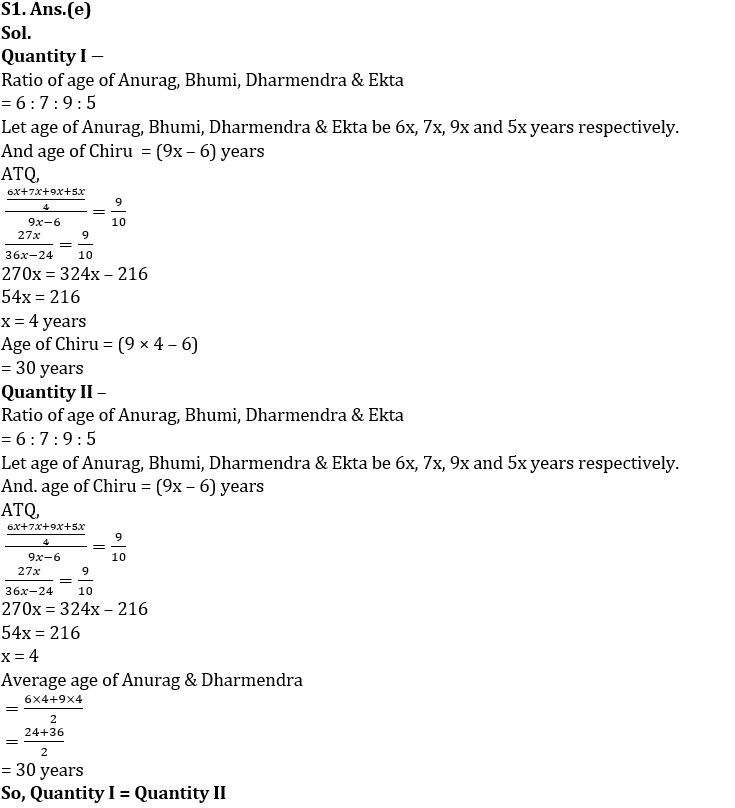
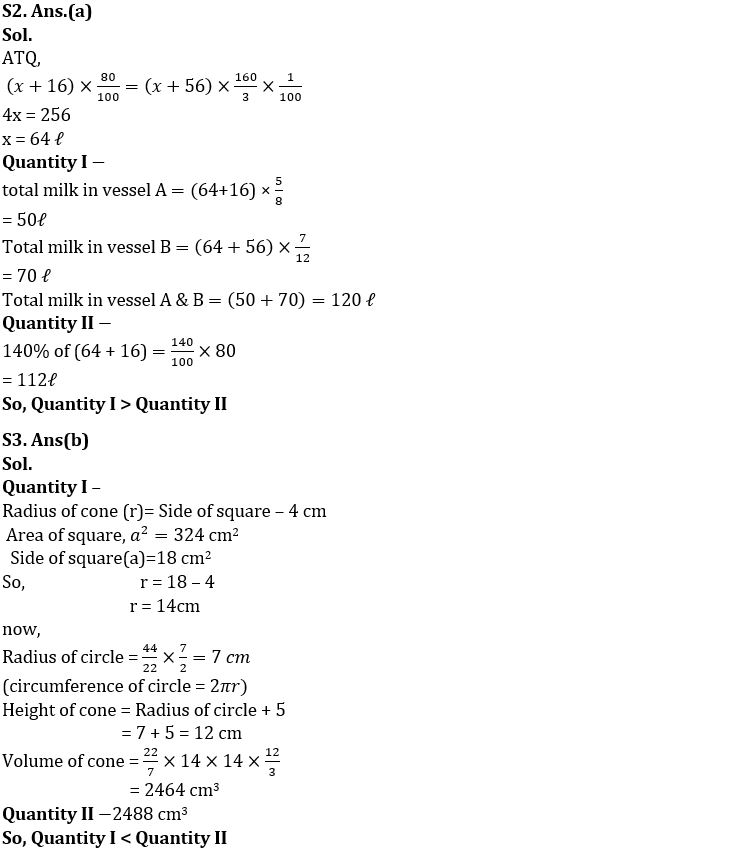
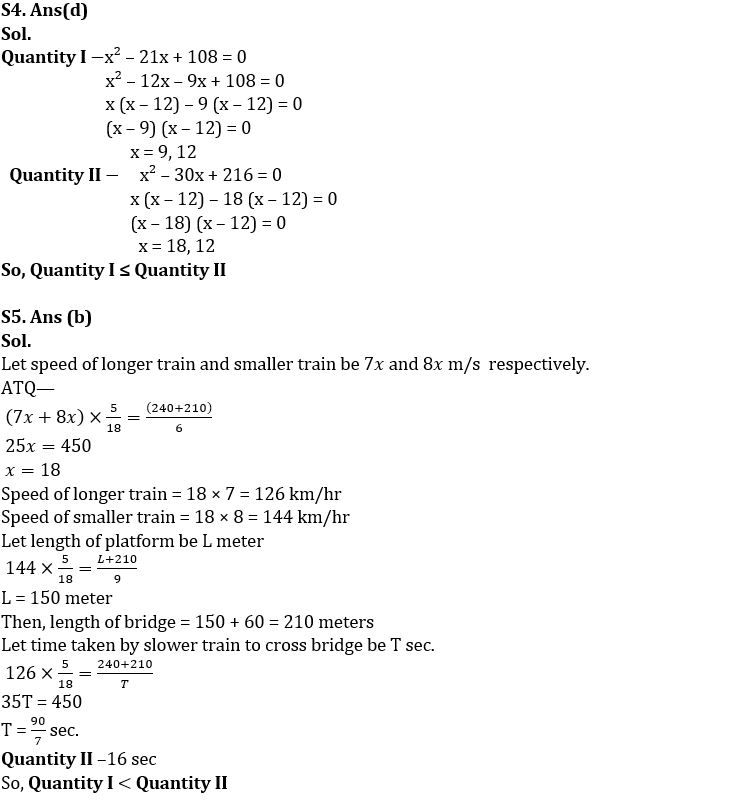
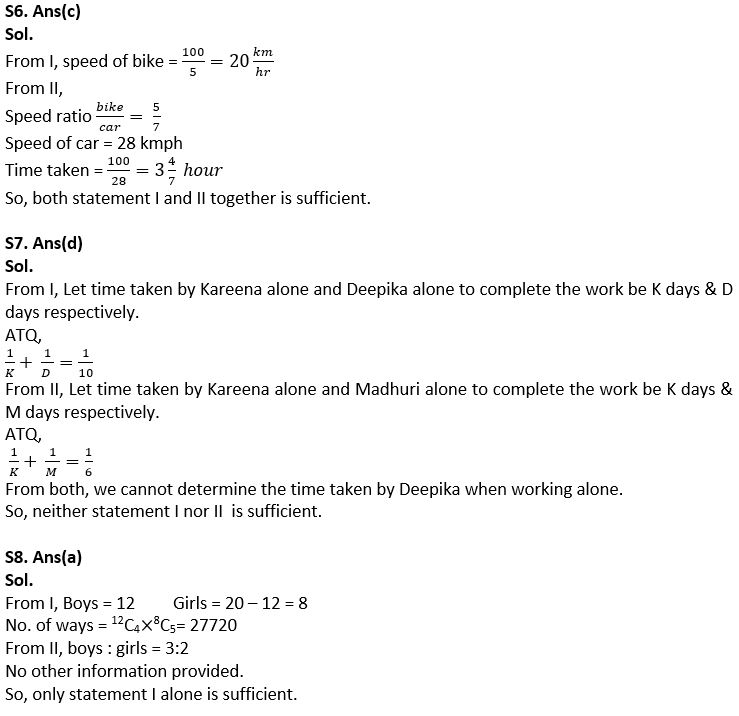
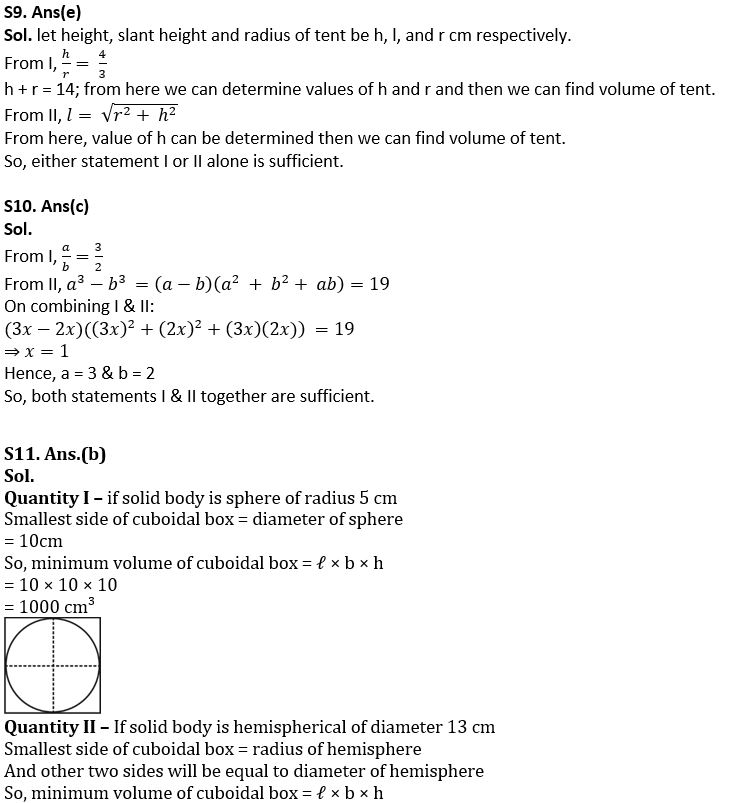
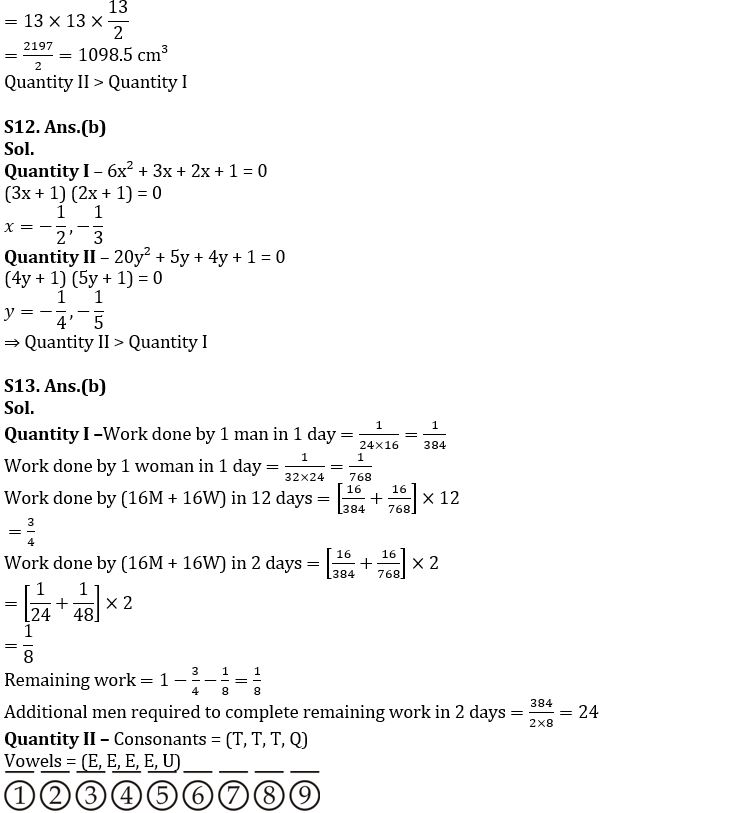
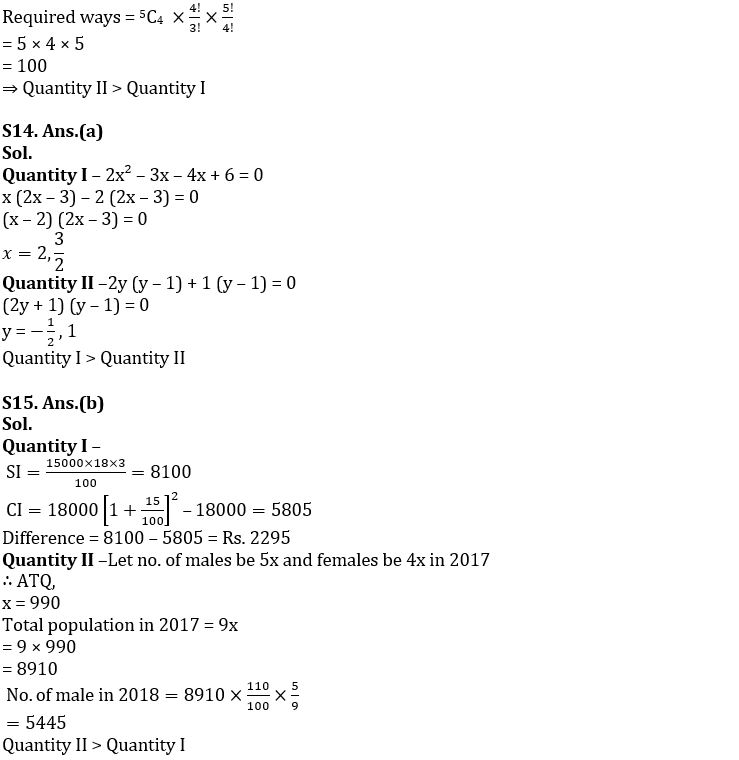





 Quantitative Aptitude Quiz For Bank Main...
Quantitative Aptitude Quiz For Bank Main...
 Quantitative Aptitude Quiz For Bank Foun...
Quantitative Aptitude Quiz For Bank Foun...




